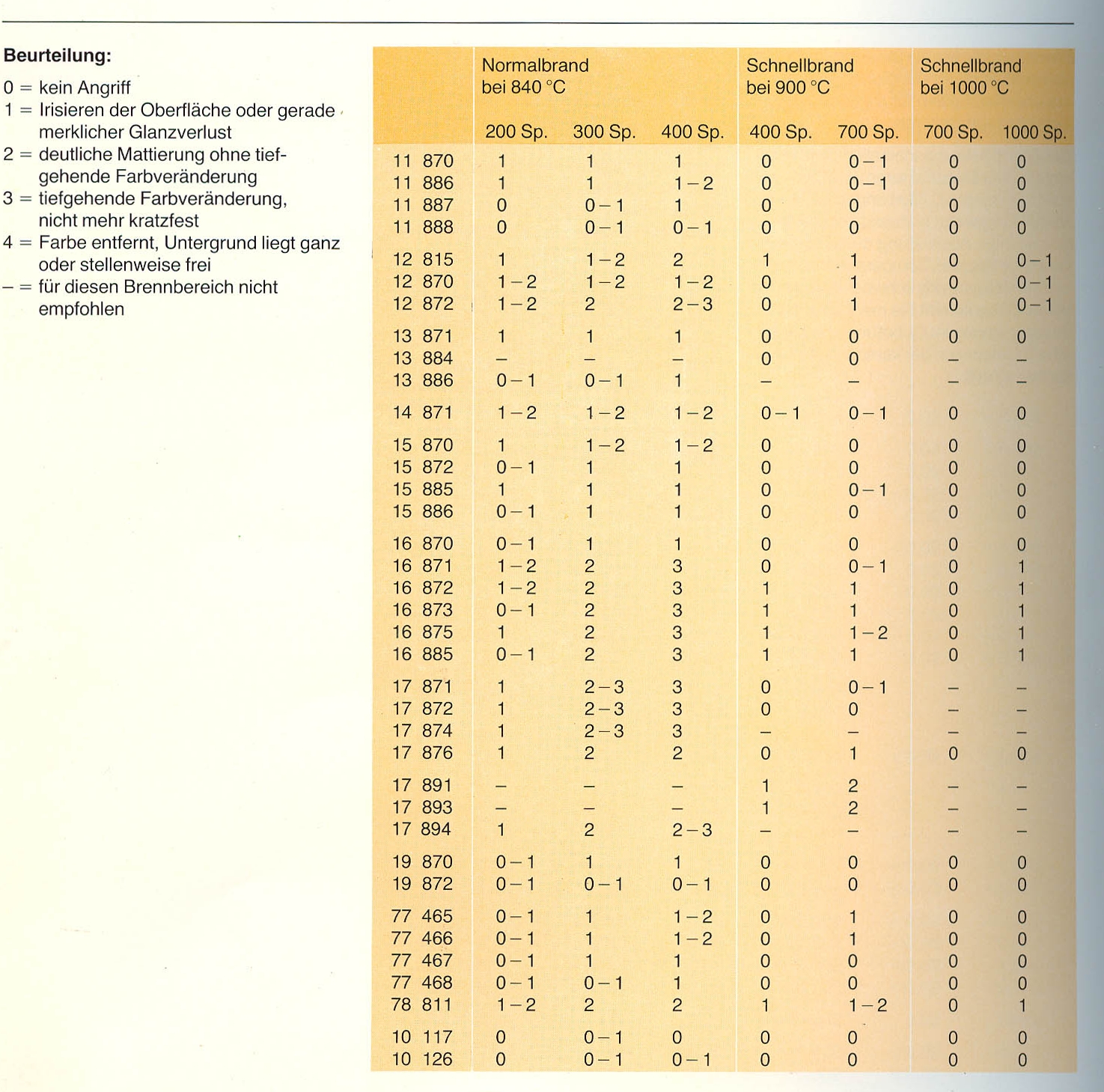Durability
For the durability of porcelain vignettes, often incorrectly referred to as "prints on porcelain", only 2 components are of essential importance.
1. Consistency of ceramic colours
2. The firing temperature
There are 2 simple rules of thumb. The more expensive the ceramic colour, the more durable the vignette will be later on. The higher the firing temperature, the sooner the ceramic colour can sink into the glaze and bond with the glass mass. The deeper the colour sinks in, the more resistant it is to mechanical or chemical corrosion. But: temperature costs money! These two factors are responsible for the fact that a vignette that looks the same on the outside can vary considerably in price.
The quality of a vignette only becomes apparent after repeated use!
The layman should be familiar with 2 standard terms.
1. Dishwasher resistance
2. Dishwasher proof
The dishwasher resitant decoration/vignette: The colour of the decoration has merged with the glaze and sunk into it. Depending on the porcelain, this melting point is reached from approx. 950 °C. This means that the decoration/vignette lasts virtually a lifetime because it has formed a homogeneous mass with the glaze. Dishwasher-proof decoration/vignette is anything that is fired below 900 °C. The colour is deposited "on" the glaze without bonding with the glass mass.
The actual suitability of the porcelain decoration varies greatly depending on the process and is produced in many different manufacturing processes. Between the types of vignette just described, we see - purely subjectively - the conclusion of a porcelain vignette with a "flow". Just imagine another layer on top of the porcelain decoration, which virtually envelops it. In the section "Information for dealers" we explain 2 techniques in more detail; the Ferro Xpression and the Ferro Samba technique. Admittedly, the techniques are developing considerably and we quote one of our production partners here who describes this method as 100% dishwasher-safe, but Holst Porzellan is rather conservative on this point and offers no guarantee. Nevertheless, our own tests have shown that both application methods are also ideally suited for vignettes in commercial use!
We recommend the following rules of thumb to users of vignettes:
1. Vignettes for temporary promotions (trade fairs) etc. -> overglaze (most favourable type of finishing)
2. Vignettes for customer and client hospitality-> overglaze with flow
3. Vignettes for the hotel and catering industry-> overglaze with hardened flow
4. Vignettes for large-scale caterers and hospitals -> inglaze (most expensive type of finishing)
For those interested in finding out more, we have provided some information from Degussa, one of two market-dominating companies for thermally stable porcelain colours, using the following images.

